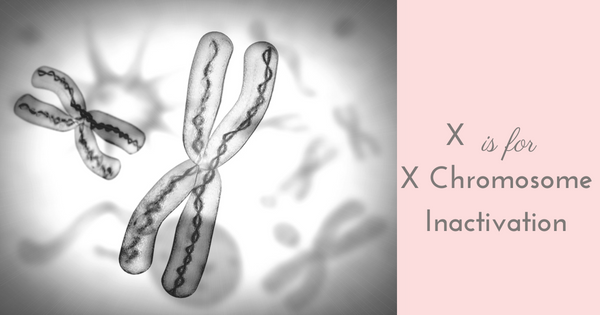Let’s take a journey back to high school biology class! As you know, the X chromosome is part of the pair of sex chromosomes. Women have two and men have one. It contains roughly 5% of your cells’ total DNA. The other 22 pairs of autosomes code for non-sex-linked characteristics. Each chromosome codes for the same type of gene, though which variation it codes for may differ. Abnormalities will arise if genes on both chromosomes were expressed. So, your body turns off, or inactivates, one copy very early in embryonic development. Some of your cells will express the genes on the chromosome inherited from your mother, and others the genes from your father. X Chromosome Inactivation is the silencing of the gene on second chromosome.
X Chromosome Inactivation
Our cells “silence” the unexpressed genes by packaging them into heterochromatin. The heterochromatin structure prevents the cell from transcribing these genes into their corresponding proteins. The inactivation process occurs at random and does not reverse. It is responsible for the heterozygous (or “carrier”) form of certain diseases. One example is if a person has Sickle Cell Trait. Not all their marrow cells code for the production of a defective red blood cell. This person has sickle cell trait, not sickle cell disease. While this is a gross oversimplification of sickle cell disease, it illustrates the point.
X chromosome inactivation occurs any time there is more than one copy of a gene, so it occurs in all the autosomal pairs of chromosomes. The genes on the Y chromosome are not inactivated as they are not also contained on the X chromosome.
Identical Twins and X Chromosome Inactivation
X chromosome inactivation is the reason why you will notice subtle differences between identical twins. These individuals possess all the same genetic material, however the expression of that genetic material may not be the same for all genes. Since the inactivation of chromosomes is random, one twin may have the maternal copy of a particular gene expressed and the other twin the paternal copy. How crazy is that?! Scientists believe that this has something to do with RNA, but the mechanism by which this happens. If you are interested in reading more on this topic, I linked a study below.
You may also like
Y is for Yoga
Z is for ZZZ
Your Doula Does Not (and Cannot) Have a VBAC “Success” Rate
Additional Reading
https://www.ncbi.nlm.nih.gov/pubmed/12429693
This article is for informational purposes only. It should not take the place of consultation with your healthcare professional.

